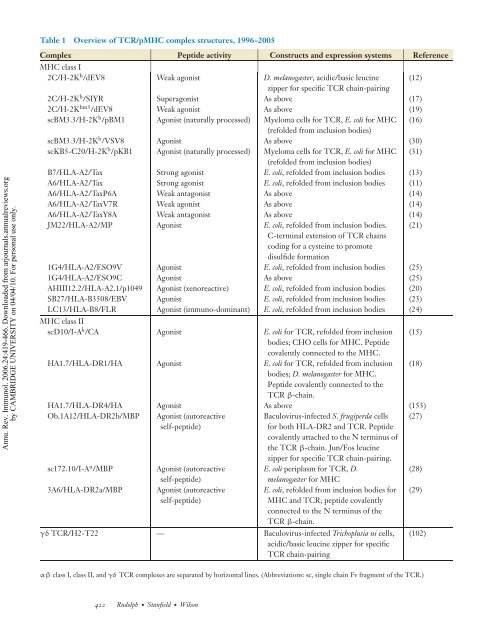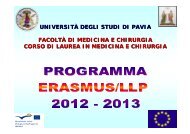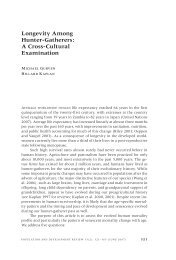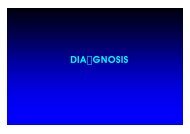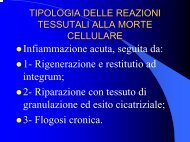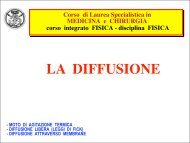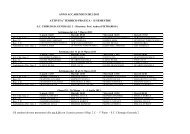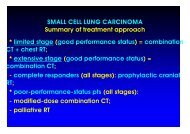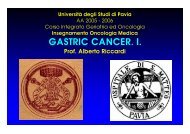Rudolph MG
Rudolph MG
Rudolph MG
Create successful ePaper yourself
Turn your PDF publications into a flip-book with our unique Google optimized e-Paper software.
Annu. Rev. Immunol. 2006.24:419-466. Downloaded from arjournals.annualreviews.org<br />
by CAMBRIDGE UNIVERSITY on 04/04/10. For personal use only.<br />
Table 1 Overview of TCR/pMHC complex structures, 1996–2005<br />
Complex Peptide activity Constructs and expression systems Reference<br />
MHC class I<br />
2C/H-2Kb /dEV8 Weak agonist D. melanogaster, acidic/basic leucine<br />
zipper for specific TCR chain-pairing<br />
(12)<br />
2C/H-2Kb /SIYR Superagonist As above (17)<br />
2C/H-2Kbm3 /dEV8 Weak agonist As above (19)<br />
scBM3.3/H-2Kb /pBM1 Agonist (naturally processed) Myeloma cells for TCR, E. coli for MHC<br />
(refolded from inclusion bodies)<br />
(16)<br />
scBM3.3/H-2Kb /VSV8 Agonist As above (30)<br />
scKB5-C20/H-2Kb /pKB1 Agonist (naturally processed) Myeloma cells for TCR, E. coli for MHC<br />
(refolded from inclusion bodies)<br />
(31)<br />
B7/HLA-A2/Tax Strong agonist E. coli, refolded from inclusion bodies (13)<br />
A6/HLA-A2/Tax Strong agonist E. coli, refolded from inclusion bodies (11)<br />
A6/HLA-A2/TaxP6A Weak antagonist As above (14)<br />
A6/HLA-A2/TaxV7R Weak agonist As above (14)<br />
A6/HLA-A2/TaxY8A Weak antagonist As above (14)<br />
JM22/HLA-A2/MP Agonist E. coli, refolded from inclusion bodies.<br />
C-terminal extension of TCR chains<br />
coding for a cysteine to promote<br />
disulfide formation<br />
(21)<br />
1G4/HLA-A2/ESO9V Agonist E. coli, refolded from inclusion bodies (25)<br />
1G4/HLA-A2/ESO9C Agonist As above (25)<br />
AHIII12.2/HLA-A2.1/p1049 Agonist (xenoreactive) E. coli, refolded from inclusion bodies (20)<br />
SB27/HLA-B3508/EBV Agonist E. coli, refolded from inclusion bodies (23)<br />
LC13/HLA-B8/FLR Agonist (immuno-dominant) E. coli, refolded from inclusion bodies (24)<br />
MHC class II<br />
scD10/I-Ak /CA Agonist E. coli for TCR, refolded from inclusion<br />
bodies; CHO cells for MHC. Peptide<br />
covalently connected to the MHC.<br />
(15)<br />
HA1.7/HLA-DR1/HA Agonist E. coli for TCR, refolded from inclusion<br />
bodies; D. melanogaster for MHC.<br />
Peptide covalently connected to the<br />
TCR β-chain.<br />
(18)<br />
HA1.7/HLA-DR4/HA Agonist As above (153)<br />
Ob.1A12/HLA-DR2b/MBP Agonist (autoreactive<br />
self-peptide)<br />
sc172.10/I-Au /MBP Agonist (autoreactive<br />
self-peptide)<br />
3A6/HLA-DR2a/MBP Agonist (autoreactive<br />
self-peptide)<br />
Baculovirus-infected S. frugiperda cells<br />
for both HLA-DR2 and TCR. Peptide<br />
covalently attached to the N terminus of<br />
the TCR β-chain. Jun/Fos leucine<br />
zipper for specific TCR chain-pairing.<br />
E. coli periplasm for TCR, D.<br />
melanogaster for MHC<br />
E. coli, refolded from inclusion bodies for<br />
MHC and TCR; peptide covalently<br />
connected to the N terminus of the<br />
TCR β-chain.<br />
γδ TCR/H2-T22 — Baculovirus-infected Trichoplusia ni cells,<br />
acidic/basic leucine zipper for specific<br />
TCR chain-pairing<br />
αβ class I, class II, and γδ TCR complexes are separated by horizontal lines. (Abbreviations: sc, single chain Fv fragment of the TCR.)<br />
422 <strong>Rudolph</strong>· Stanfield· Wilson<br />
(27)<br />
(28)<br />
(29)<br />
(102)


